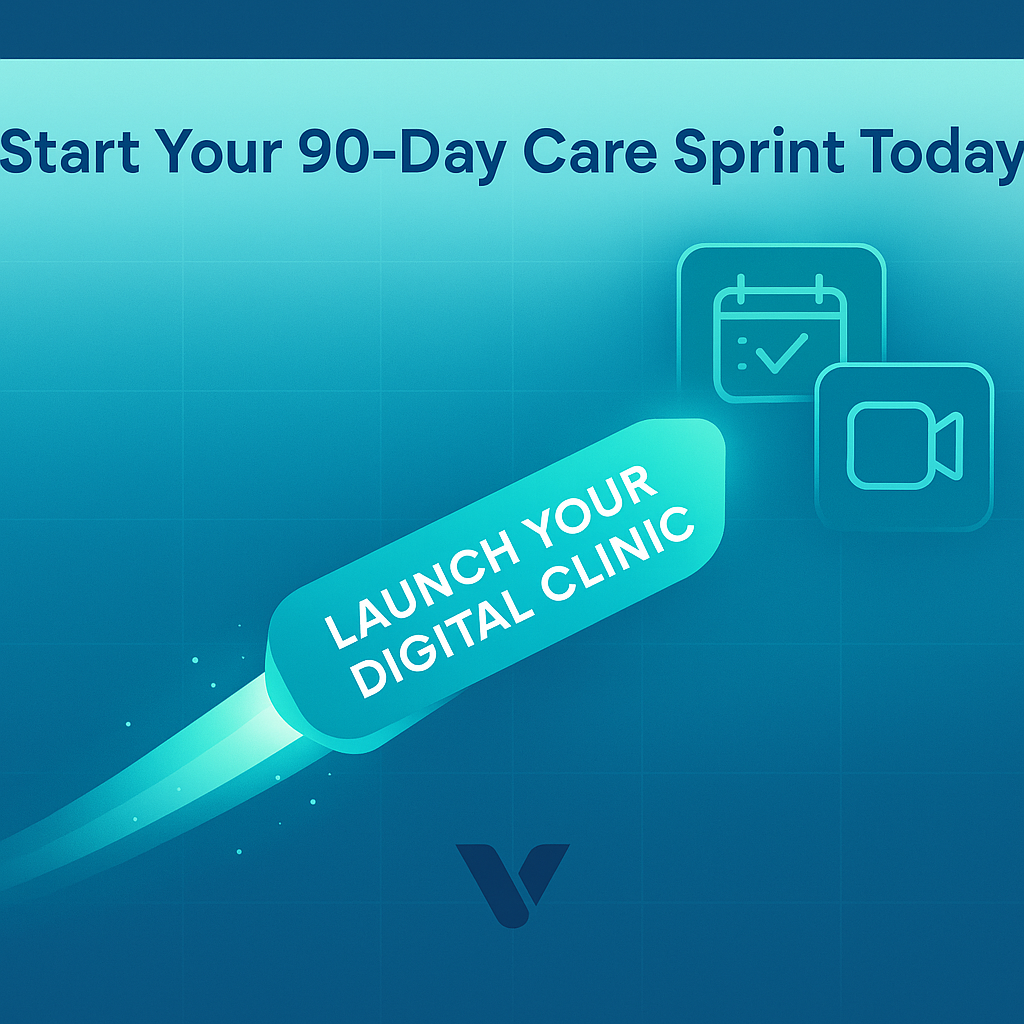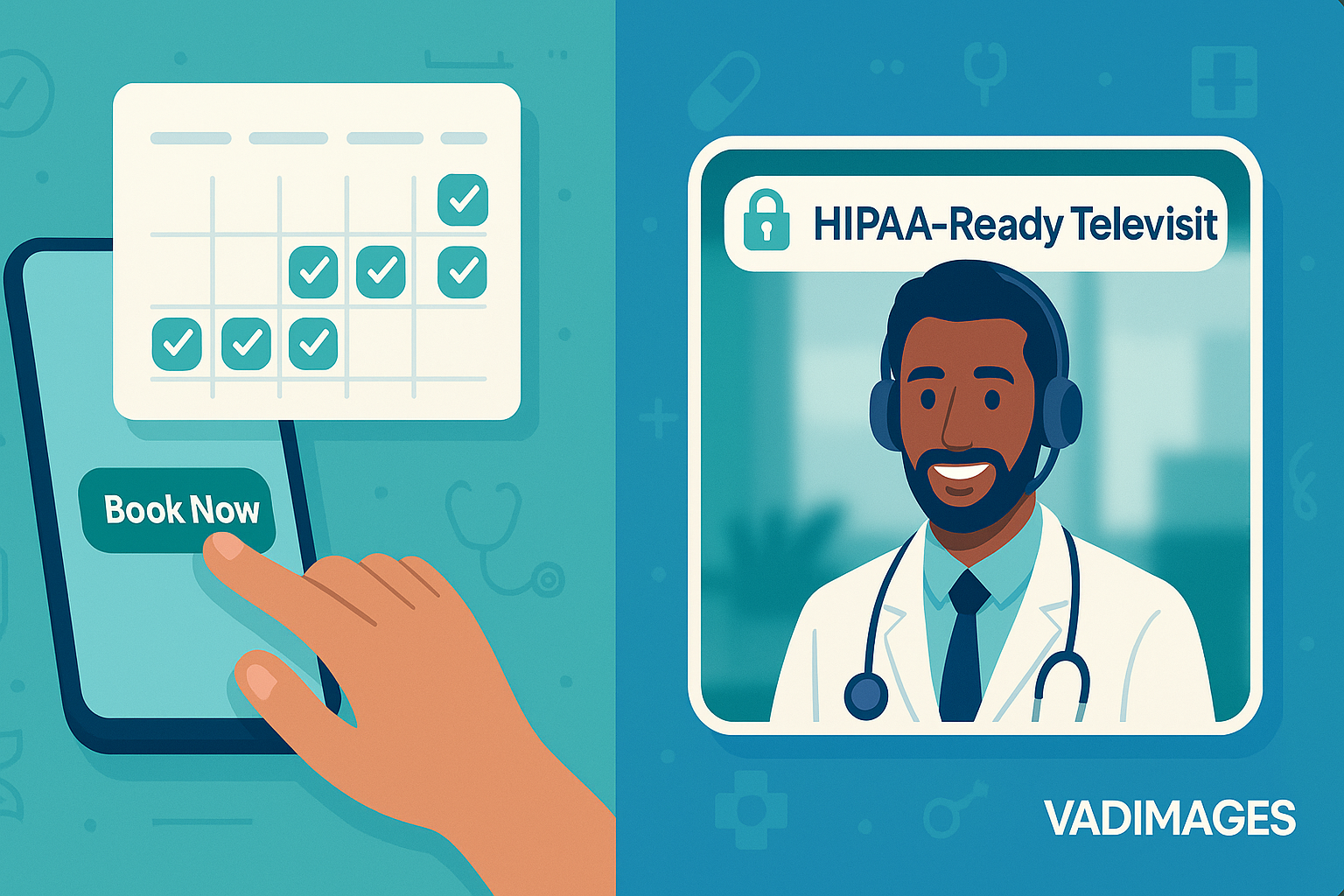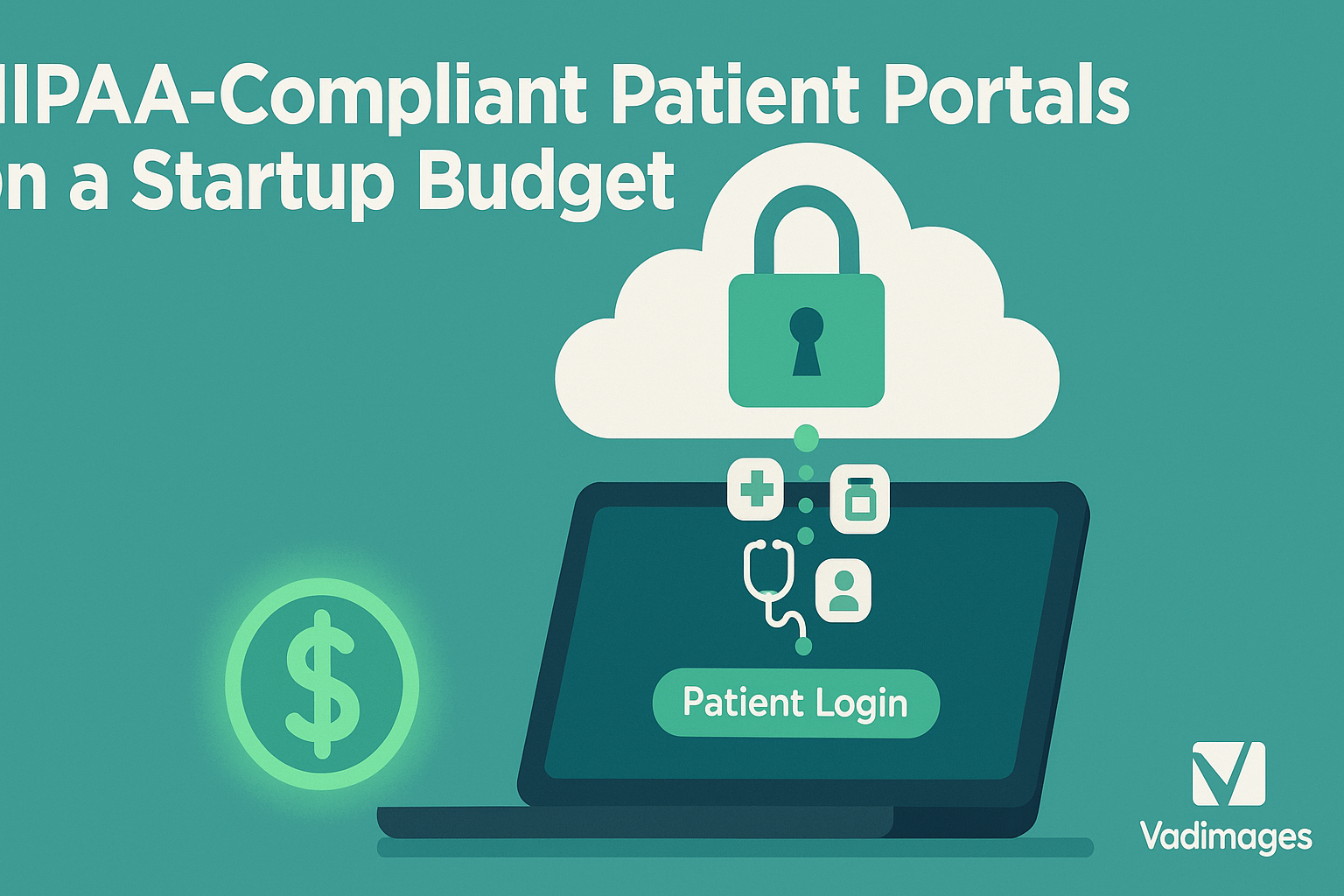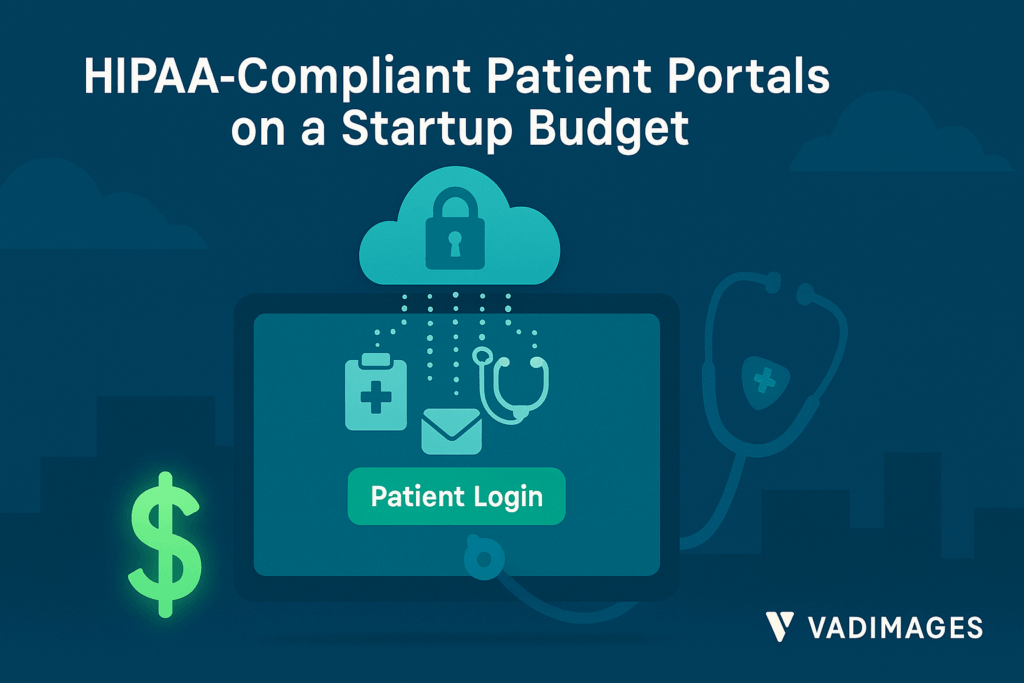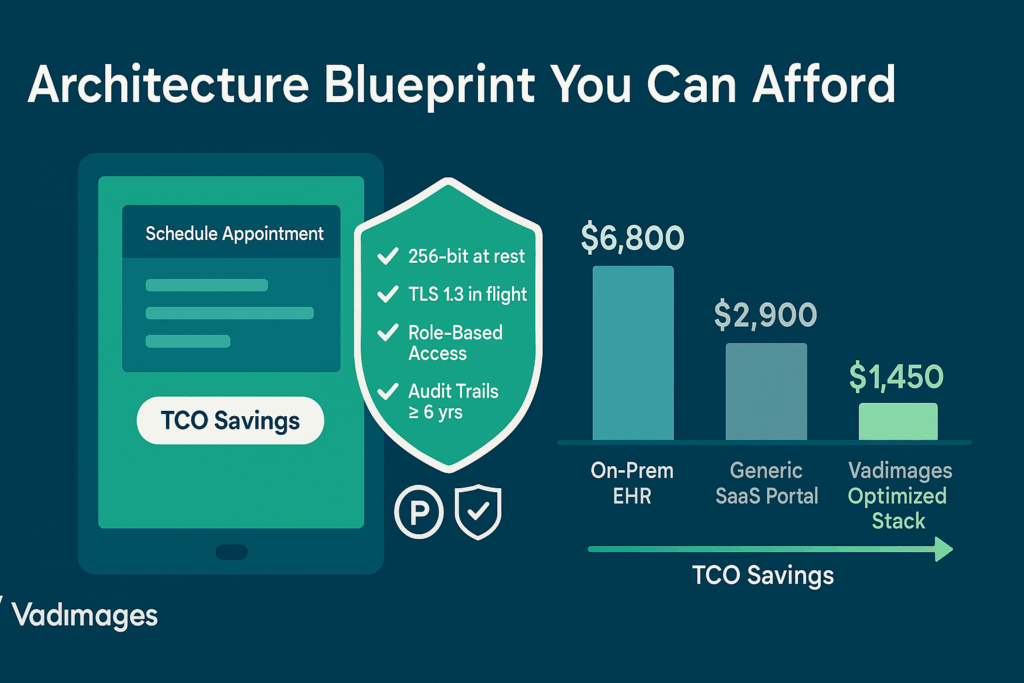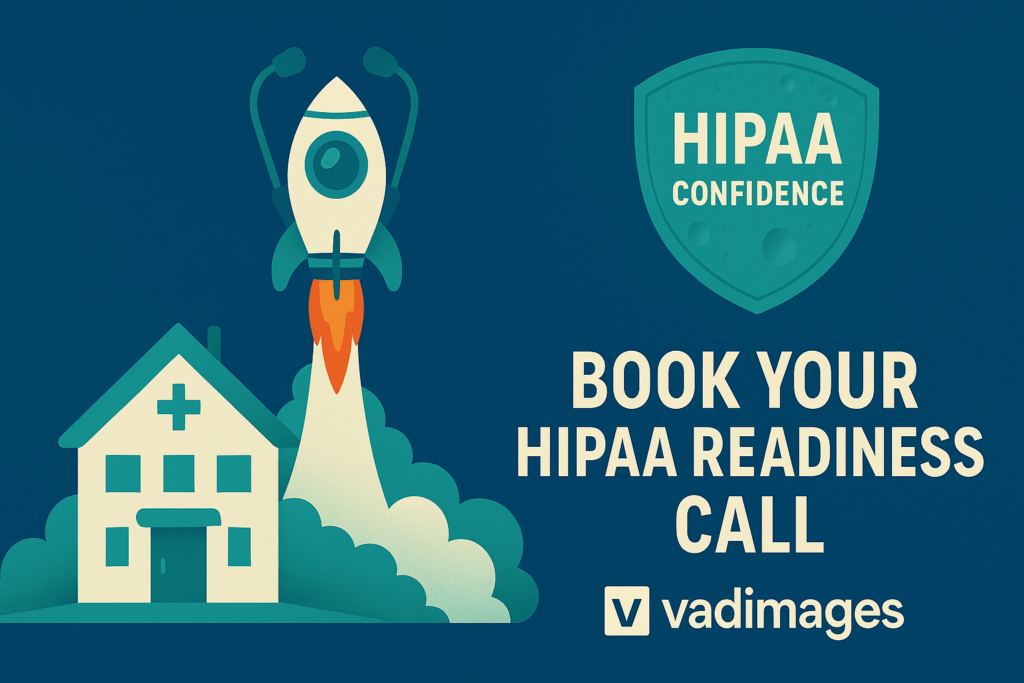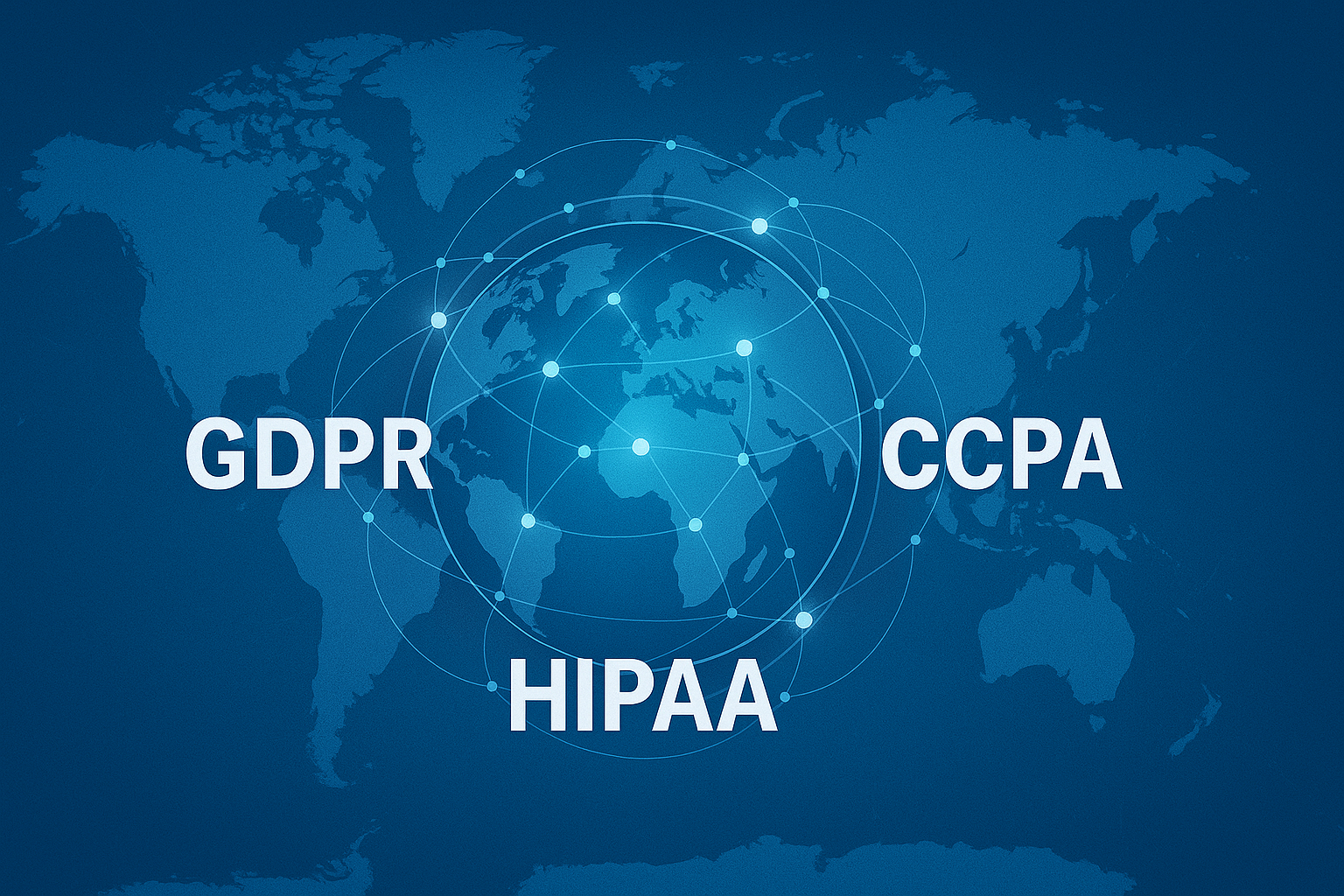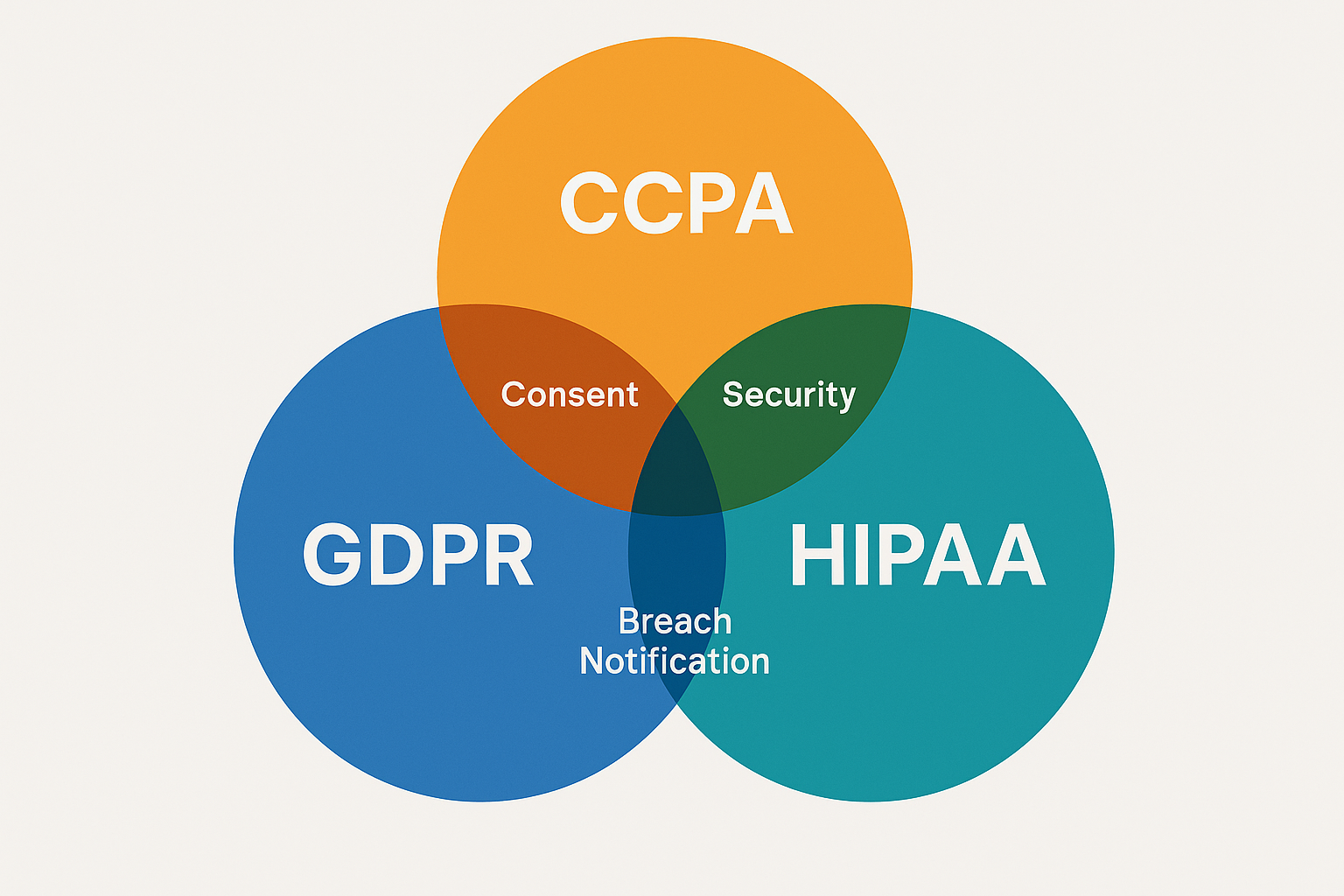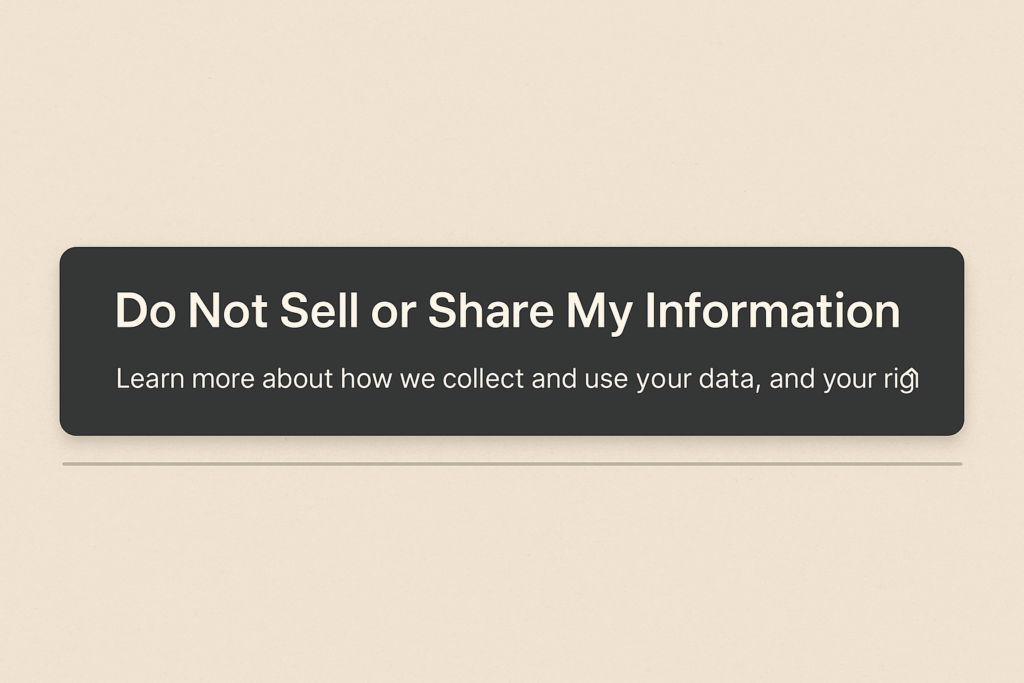The New Patient Journey Starts Online
When the average American reaches for care, they reach for a screen first. Research shows that roughly sixty percent of U.S. consumers now typically schedule appointments online rather than by phone, a figure that keeps edging upward as Gen X and Millennials become the decision-makers for family healthcare . At the same time, nine in ten patients say 24/7 digital self-scheduling is “important” to their choice of provider .
For independent practices and neighborhood clinics, that demand is an existential fork in the road. Patients who cannot reserve a slot in two taps often leave the browser tab—sometimes permanently—for competitor sites that offer a seamless booking widget tied to real-time insurance verification. Worse still, manual phone scheduling locks front-desk teams into repetitive calls that swell overhead just when reimbursements are tightening. In an industry where missed appointments account for billions in annual lost revenue, accessible digital scheduling is no longer a nice-to-have; it is the new doorway to care.
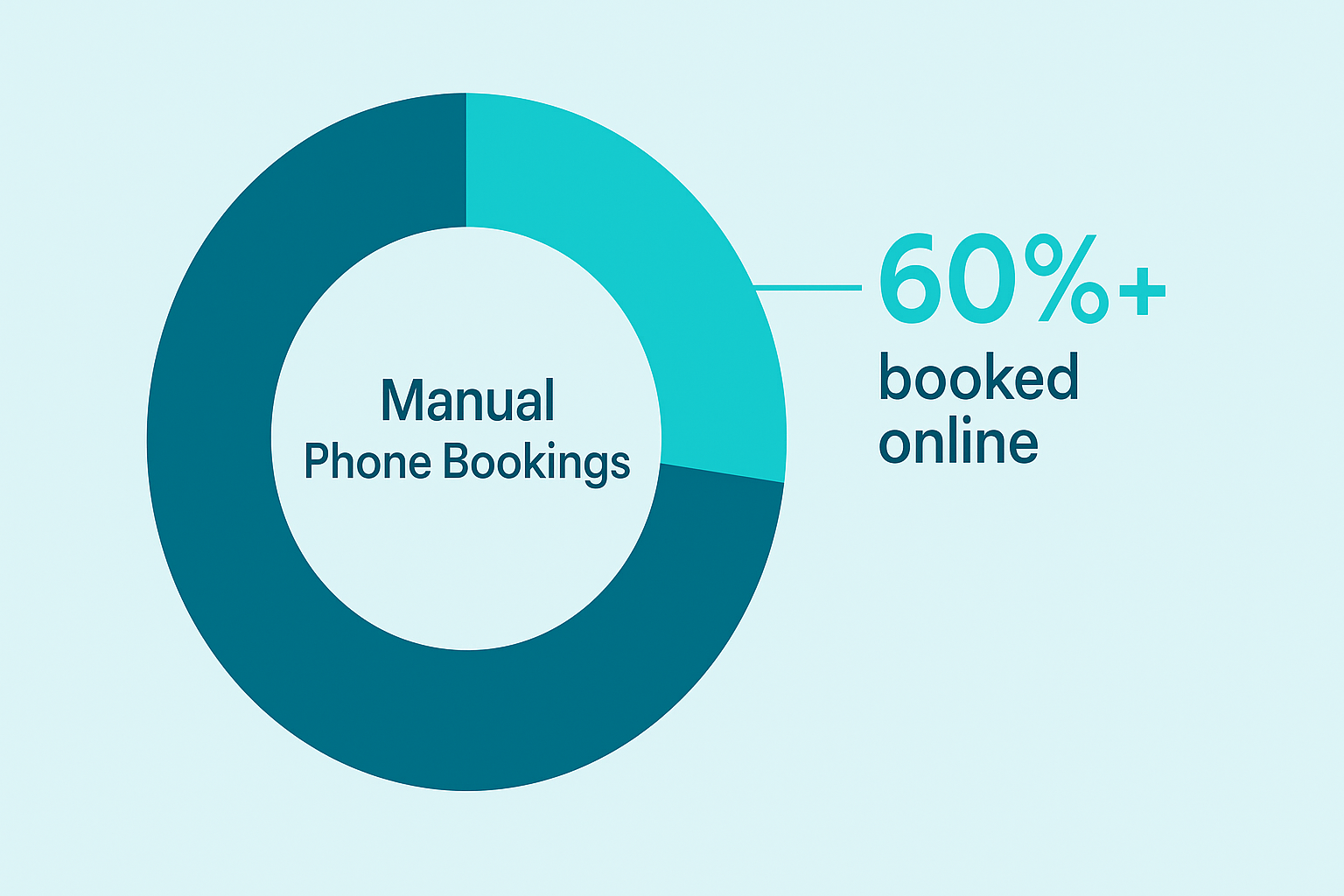
Building a Seamless Scheduling Experience
The first pillar of any small-clinic digital strategy is a HIPAA-compliant appointment portal that speaks fluently with practice management software. A best-in-class build threads together six moving parts: responsive UI for mobile and desktop, EHR integration to surface provider availability, insurance-eligibility checks, secure payment capture, automated reminders by SMS/email, and real-time analytics on no-show trends.
Vadimages engineers follow an API-first pattern—leveraging fast server-side rendering in Next.js, encrypted data in PostgreSQL, and FHIR-compatible endpoints—to ensure that booking data flows straight into existing clinical workflows. No swivel-chairing between legacy screens, no duplicate entry. And because the stack runs in containerized micro-services on AWS Amplify Gen 2, the clinic can scale from a single practitioner to multisite group without rewriting code.
Once live, clinics typically see dramatic operational gains. Self-service portals cut inbound call volume by up to forty percent, freeing reception to handle complex cases. Automated wait-list backfilling keeps chairs filled, while two-way cancellation links slash idle gaps. Above all, the clinic brand earns trust: patients feel in control when they can book or reschedule at midnight from the couch.
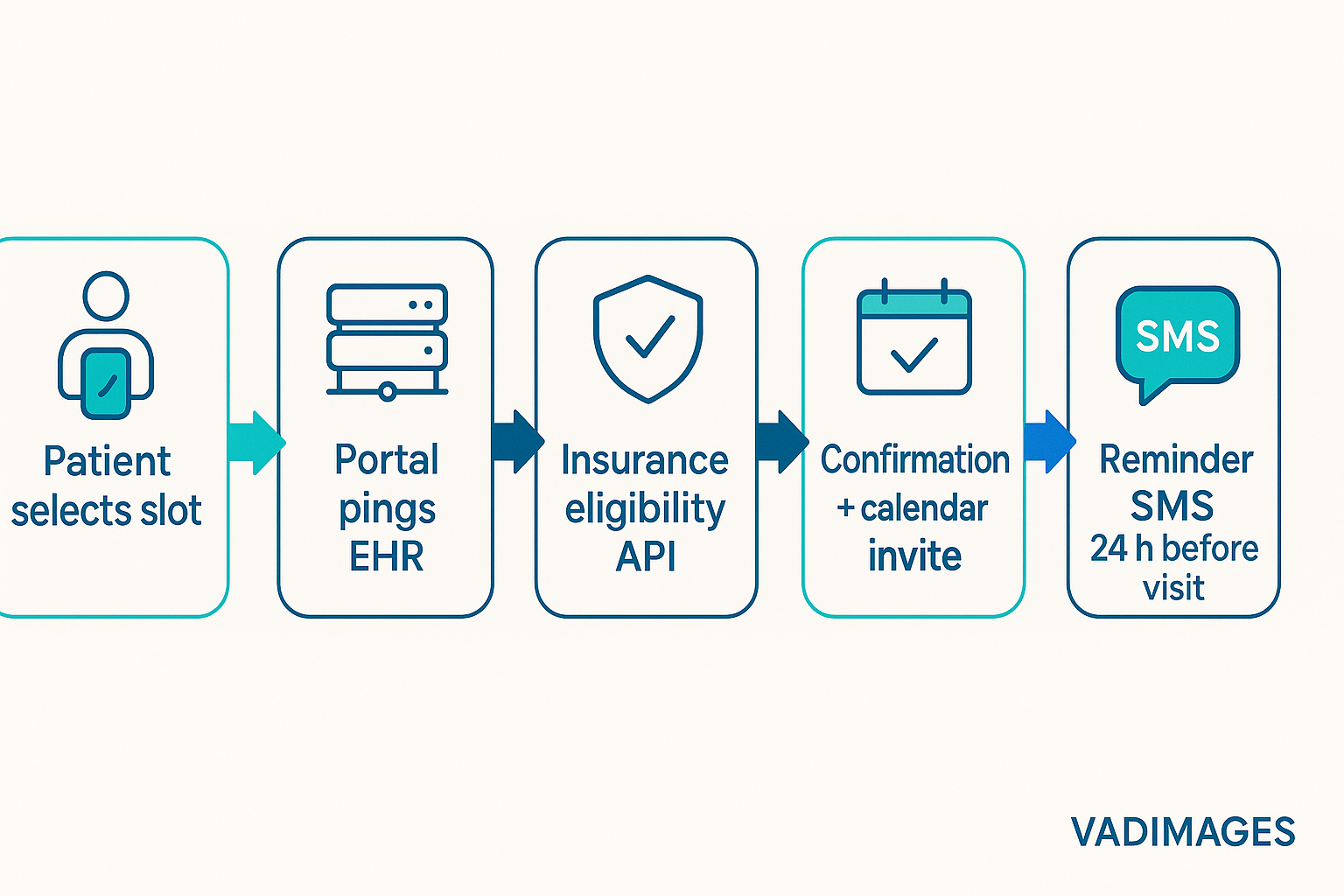
Extending Care Beyond the Exam Room with Telehealth
Any digital front door is incomplete without a virtual back room. Telehealth adoption roared from 14 % of physicians in 2016 to 80 % by 2022 , and small clinics are no exception—especially in rural or suburban zip codes where specialists are miles away. Yet patient experience craters when video visits run on disparate consumer apps that violate HIPAA or drop frames on low-bandwidth connections.
Vadimages folds encrypted WebRTC video into the same portal that powers scheduling, so a confirmed slot instantly converts to a launch-ready televisit link. We embed Stripe-based copay capture, automated CPT code tagging for Medicare parity, and cloud-recorded transcripts stored in HIPAA-eligible S3 buckets. For follow-up, the system can push lab orders, e-prescriptions, and secure chat into the patient dashboard—no separate logins needed.
Small clinics that layer telehealth onto robust scheduling unlock new revenue streams: chronic-care check-ins, behavioral-health sessions, post-op wound reviews, and weekend “walk-in” slots handled from the physician’s laptop. Crucially, telehealth also future-proofs a practice against regional disruptions—from winter storms to public-health crises—by keeping provider-patient relationships intact even when the waiting room lights are off.
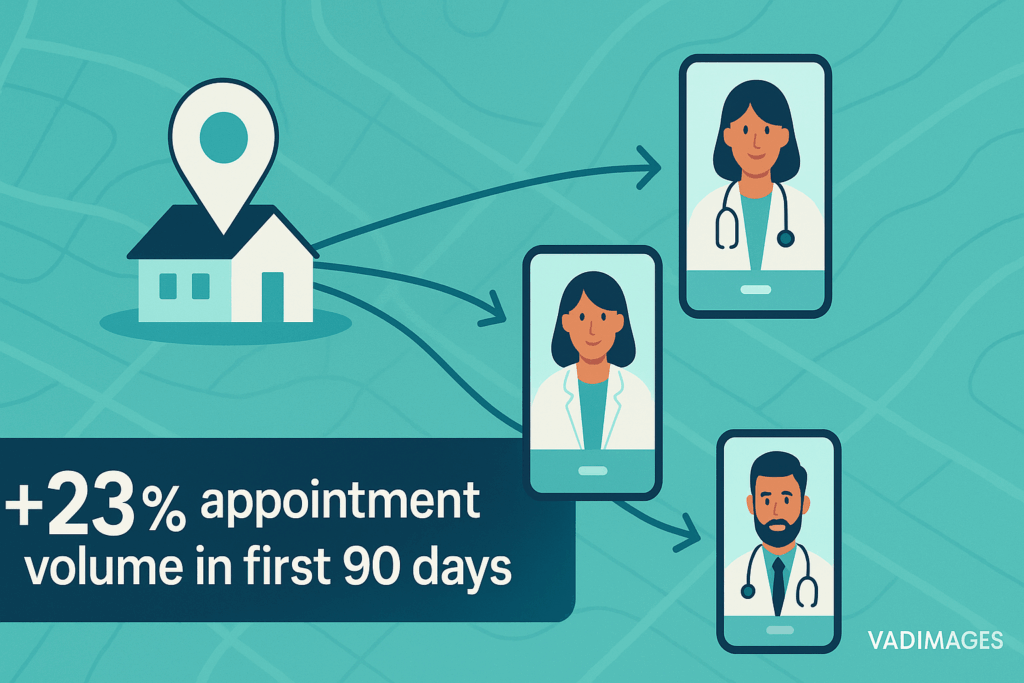
Why Vadimages Builds HIPAA-Ready Portals Faster
Independent clinics rarely have six months—or six figures—to spare on enterprise platforms built for hospital chains. Vadimages offers a 90-Day Digital Care Sprint that delivers production-ready scheduling and telehealth portals on a subscription model tailored to small-business cash flow. Our healthcare toolkit ships with:
• Pre-audited HIPAA logging and Business Associate Agreement templates
• Role-based dashboards for physicians, nurses, billing, and administrators
• ADA-compliant UX with WCAG 2.2 accessible color contrasts and keyboard flows
• Edge-optimized global caching that drives sub-800 ms Time-to-First-Byte for U.S. patients
Because every line of code is custom, clinics retain full data ownership—no vendor lock-in, no surprise per-provider fees. And with AWS auto-scaling and SOC 2-aligned DevSecOps baked in, uptime stays above 99.95 %, even during flu-season surges.
When patients click “Book,” they see your brand—not a generic form. When they join a telehealth call, they land in your secure environment—branded, encrypted, integrated. That’s the Vadimages difference: enterprise-grade engineering, boutique collaboration, predictable cost.
